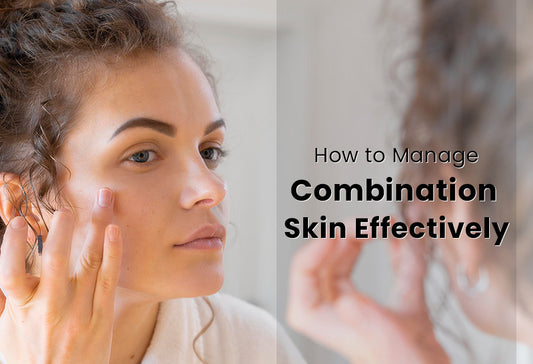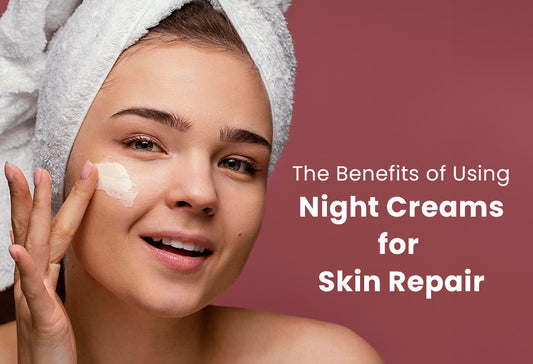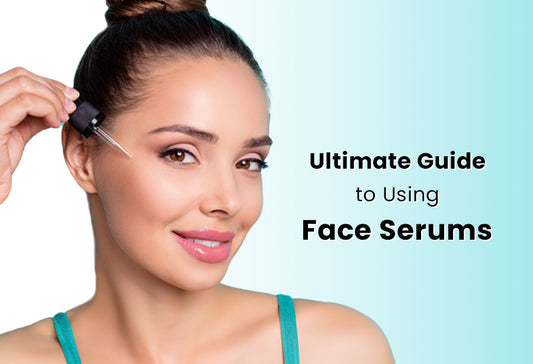
Face Serums: Unraveling Their Magic in Fading Dark Spots
When it comes to achieving a radiant and even complexion, face serums, have emerged as powerful skincare allies. These concentrated formulations are packed with active ingredients that can address specific skin concerns, including dark spots. If you’re struggling with uneven skin tone and want to understand how face serums can help fade dark spots, you’ve come to the right place. In this blog, we will explore what face serums are, how they work, and the key ingredients that make them effective in reducing the appearance of dark spots.
What are Face Serums?
Face serums are lightweight, fast-absorbing liquid formulations that contain high concentrations of active ingredients. They are designed to target specific skin concerns and provide targeted solutions, such as improving skin texture, reducing fine lines, or fading dark spots. Unlike moisturizers, serums do not contain non comedogenic ingredients, allowing them to penetrate deeper into the skin and deliver their potent ingredients.
Face Serums for Fading Dark Spots
Dark spots, also known as hyperpigmentation, occur when excess melanin (pigment) accumulates in specific areas of the skin, resulting in patches that appear darker than the surrounding skin. Various factors contribute to the development of dark spots, including sun exposure, hormonal changes, acne scarring, and skin inflammation.
Face serums can be instrumental in fading dark spots due to their ability to deliver potent active ingredients directly to the affected areas. Let’s explore the key ingredients commonly found in face serums that aid in reducing the appearance of dark spots:
- Vitamin C: A Brightening Powerhouse
Vitamin C is a well-known antioxidant that plays a crucial role in inhibiting melanin production and reducing the appearance of dark spots. By neutralizing free radicals caused by UV exposure and pollution, vitamin C helps prevent further skin damage while promoting a brighter complexion. Look for serums with stable forms of vitamin C, such as ascorbic acid or ascorbyl glucoside, for optimal results.
- Niacinamide: The Multifaceted Wonder
Niacinamide, also known as vitamin B3, offers an array of benefits, including its ability to reduce hyperpigmentation and even out skin tone. It works by inhibiting melanosome transfer (melanosomes are cells responsible for transporting melanin) and reducing inflammation. Niacinamide is a great option for those with sensitive skin, as it is well-tolerated and gentle.
- Alpha Hydroxy Acids (AHAs): Exfoliating for Brighter Skin
AHAs, such as glycolic acid and lactic acid, are exfoliating agents that help remove dead skin cells and promote cell turnover. By sloughing off the top layer of the skin, AHAs can fade dark spots and reveal fresher, more even-toned skin underneath. Incorporate AHAs in your serum for a gentle exfoliating action that helps to improve skin texture as well.
- Retinol: The Gold Standard for Skin Renewal
Retinol, a derivative of vitamin A, is a powerful ingredient renowned for its ability to stimulate collagen production, increase cell turnover, and fade dark spots. By encouraging new skin cells to replace damaged ones, retinol can help reduce the appearance of hyperpigmentation. Start with a lower concentration of retinol and gradually increase usage to avoid potential irritation.
- Kojic Acid: A Natural Skin Brightener
Derived from various fungi, kojic acid is a natural skin brightening agent that inhibits tyrosinase, an enzyme involved in melanin production. As a result, it can help lighten dark spots and even out skin tone. Kojic acid is often found in combination with other brightening ingredients for enhanced efficacy.
- Licorice Extract: Soothing and Brightening
Liquorice extract contains glabridin, which has skin-soothing and brightening properties. It inhibits tyrosinase activity, reducing melanin production and fading dark spots. Additionally, liquorice extract has anti-inflammatory benefits, making it suitable for sensitive skin.
How to Use Face Serums for Fading Dark Spots
- Patch Test: Before incorporating a new serum into your skincare routine, perform a patch test on a small area of your skin to check for any adverse reactions.
- Cleanse and Tone: Start with a clean canvas by thoroughly cleansing and toning your face.
- Apply a Pea-Sized Amount: Serums are potent, so a little goes a long way. Apply a pea-sized amount to your face, focusing on areas with dark spots or hyperpigmentation.
- Pat, Don’t Rub: Gently pat the serum into your skin using your fingertips to ensure even distribution and absorption.
- Follow with Moisturizer and Sunscreen: After your serum has fully absorbed, follow with a suitable moisturizer to lock in hydration. Don’t forget to apply broad-spectrum sunscreen during the day to protect your skin from further sun-induced hyperpigmentation.
- Be Patient and Consistent: Fading dark spots takes time, and results may not be immediate. Be patient and consistent with your serum application to achieve noticeable improvements over time.
Conclusion
Face serums are versatile and powerful allies in the battle against dark spots and hyperpigmentation. By incorporating ingredients like vitamin C, niacinamide, AHAs, retinol, kojic acid, and liquorice extract into your skincare routine, you can effectively fade dark spots and achieve a brighter, more even complexion. Our top recommendation is the Intense Hydrating Serum from Jeannot Ceuticals, with this you may achieve the skin you’ve always wanted. This moisturizing serum’s plant-based components support the skin’s natural defense against outside aggressors. The richness of white peony, caviar and seaweed extracts work as natural moisturizers to hydrate and calm your skin. You should swear by this serum if you have sensitive or stressed skin. Spread the serum over your palm, then gently massage it into your face and enjoy bright, glowing and youthful skin with continued and correct usage.
Remember to use serums as directed, perform a patch test, and combine them with sunscreen for the best results. With patience, consistency, and the right face serum, you’ll be well on your way to radiant, spot-free skin.








